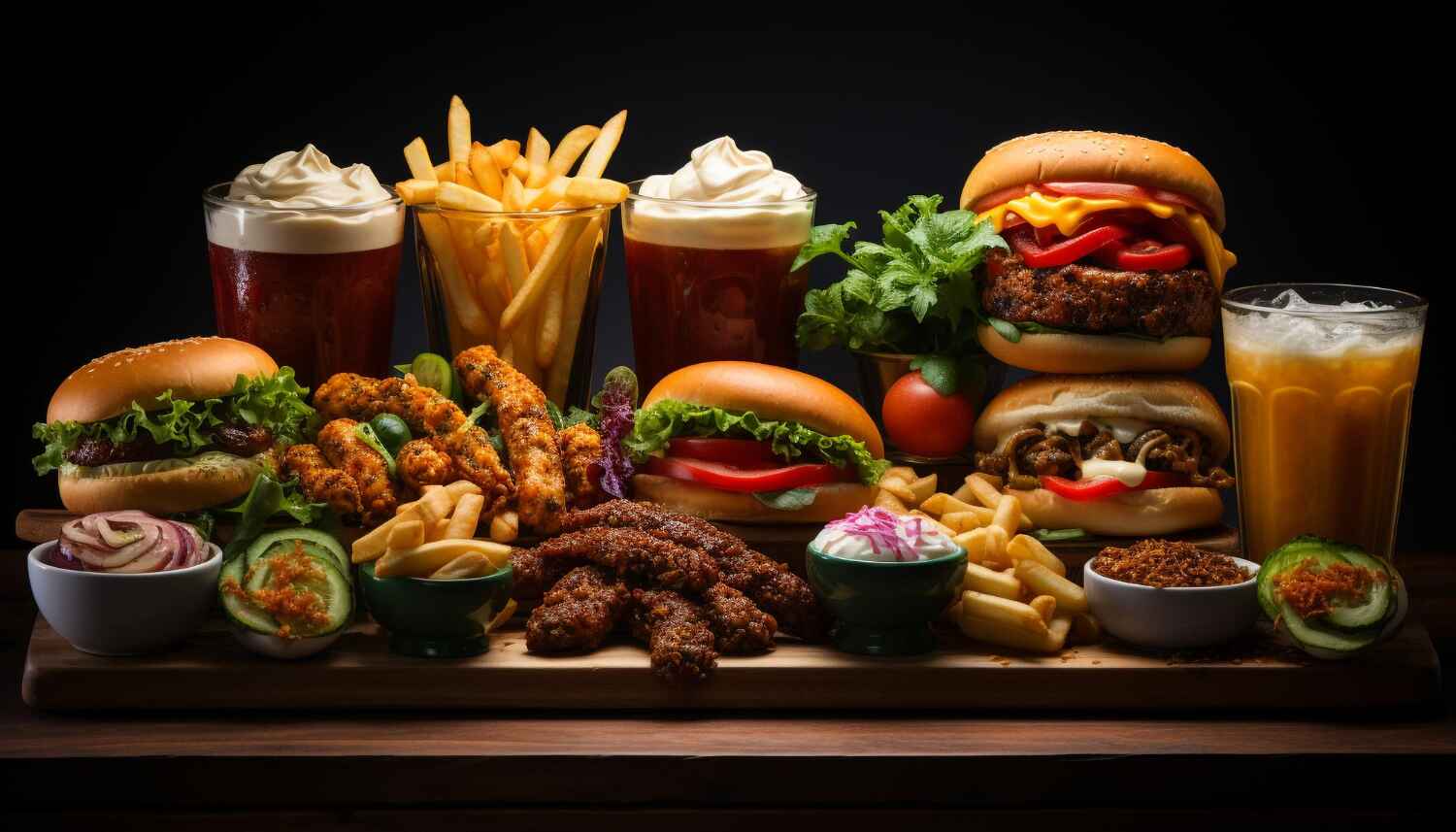Who can deny the mouthwatering tastes of burgers, sandwiches, pizza/pasta, Fast Food chicken, and seafood, conveniently delivered to your doorsteps 24/7. Whether you are a couch potato or a busy bee solving accounting jargon for your next day’s presentation, you need something to munch on at odd hours of the night or just during the lunch break to have a working lunch with the boss. A quick delivery by your favorite food chain can serve the purpose.
The Global Phenomenon of Fast Food
Historical Roots
As history goes, fast food started with the first fish and chips in Britain in the 1860s. The United States saw the popularization of drive-through restaurants in the 1950s. Merriam–Webster dictionary recognized the term “fast food” in 1951.
Market Trends and Projections
According to the “Fast Food Market by Type and End User: Global Opportunity Analysis and Industry Forecast, 2020-2027,” the global fast food market is expected to reach $931.7 billion by 2027, rising at a CAGR of 4.6% from 2020 to 2027. The fast food market size was valued at $647.7 billion in 2019.
Factors Driving Growth
The significant growth during the forecast period is due to the increasing number of fast food restaurants, rising number of working women, easy technology-based ordering options, popularity of international cuisine options, and change in the culinary tastes and preferences of consumers. The cost of setting up a restaurant, increasing expenses of a fixed restaurant serving staff, and retaining large places for dine-in arrangements are also some of the factors for the emerging trend of fast food restaurant businesses.
Fast Food LANE- Quick Business Gain
The fast food business also brings quick profits. According to some reports, the average profit margin for restaurants falls between 3 to 5% but can range anywhere from 0 to 15%. This can be broken down into the average profit margin per different restaurant type: Fast-food restaurant – 6 to 9%, Full-service restaurant – 3 to 5%.
Fast Food in Pakistan
Leading Chains and Consumer Trends
Fast Food Vs Homemade Food
There is no match for home-cooked food. Fast food, prepared and served from fast food restaurants or street vendors, though considered an alternative to homemade food, health-conscious consumers still find homemade food better in terms of their ingredients.
While homemade food is healthier with fewer calories, fats, sugars, and sodium than most fast foods, fast foods are cooked with cheaper ingredients such as high-fat meat, refined grains, and sugar and fats, instead of better options like lean proteins, whole grains, fresh fruits, and vegetables. Research has shown that on average, homemade meals contain more vegetables, fewer carbohydrates, and less fat than any other meal. Health-conscious consumers having a traditional approach still prefer home-cooked meals over fast food and dine-in over take-away arrangements.
Join Cure and Craft:
Calling all healthcare professionals, medical students, and writers! Share your insights, experiences, and knowledge on our platform. Let’s craft informative articles together, shaping the future of healthcare. Connect, inspire, and enlighten our audience.






